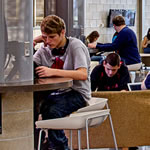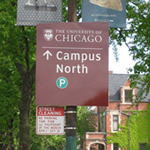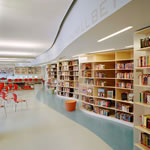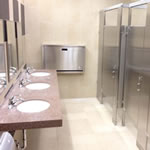When you enter a room, what do you notice first? Chances are it’s the walls. Wallcoverings are one of the easiest and most cost-effective ways to create design impact in a school.

It takes more than bricks, mortar and roofing materials to keep the heat (or cold) in and the rain out. Here's a look at what you need to know.

From BIM to energy-use monitoring, WiFi and more, existing buildings are being redesigned and outfitted to become technological standouts.

Power-enabled columns: at the Milan Center for Innovative Studies, Milan, Mich., power and data connections at structural columns give students a place to engage in self-directed learning.

Art can proclaim a building's identity while promoting educational goals.

Integrating the right signage into your campus can aid in building identity and marketing for use in the wider community.

Using floors as a way-finding method.

Here's how two campuses are satisfying administrators by saving money and satisfying students by increasing sustainability in their restroom and locker room renovations.